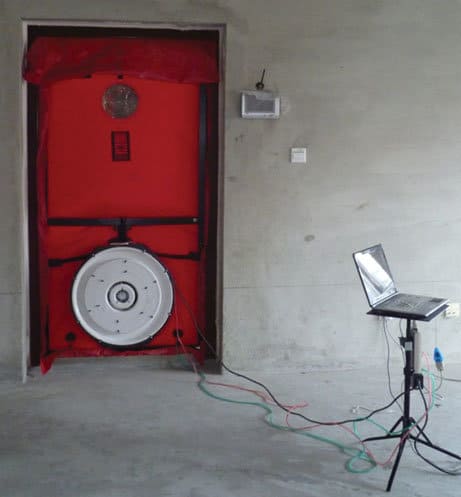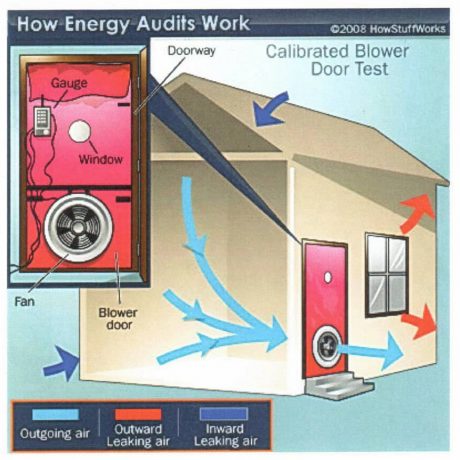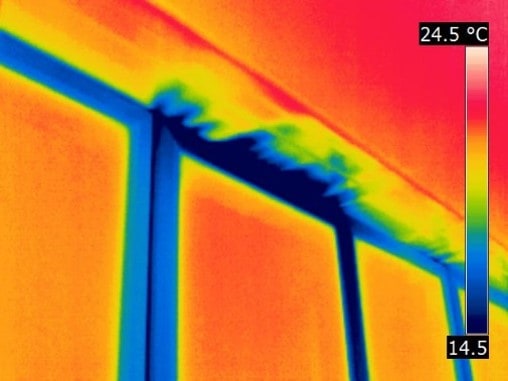Useful information
What is a blower door test?
01.12.2020 20:46

A blower door test is a method for testing air-tightness of a building . It matters because air-tightness is one of the main factors of energy efficiency of a building. If a house loses warm air through seams in winter or lets cool air conditioned air escape in hot summer days you either end up with an unpleasant environment indoors or have to spend more energy to feel comfortable.
A blower door test may be required by building regulation for new buildings or renovation and it is a valuable tool to find air leakage problems for a timely fix.
How is air-tightness measured?
A blower door test is usually carried out by a third party specialist using specific equipment and following standardized methodology. Air tightness of a building is measured by creating an air pressure difference of 50 Pascals between indoors and the outer environment.
For the purpose of the test all openings in the building to the outer environment such as windows, doors and ventilation ducts are closed except for one doorway where special blower door equipment is mounted. It consists of a screen with a fan which creates the pressure difference while measuring the airflow of the fan and pressure changes. By inputting the surface area of the building envelope and/or volume of indoor space special software calculates values which express the air tightness of the building.

Why do a blower door test?
A blower door test results can indicate whether there are problems with the air-tightness of the building envelope. New buildings can be required to make a blower door test and meet certain values by the building code. The test can include the use of thermal imaging and a fog machine to pinpoint the location of air leakage in the seams of the building envelope such as window and door installation or panel seams. The findings are then presented in a report.
Energy leakage can also be found with simple thermography but this method is effective only if there is a significantly large difference in temperature between indoors and the outside environment. It would be most effective for a heated building in winter or an air conditioned building on a hot day. However, a blower door test can be done as soon as the building envelope is done. Therefore problems can be fixed while construction works are still ongoing.
Air tightness in building code and other standards
Air-tightness measurement can be expressed as Q50 which is air change per unit of building envelope area at a 50 Pa pressure difference between indoors and the outside environment and uses the unit of m3/(m2xh). This is the measure usually used in building code for a requirement that new buildings must meet. The values may vary across countries. The measure required in building code may be expressed in different units. For example Swedish regulations require V50 measure below 0,6 L/(sxm2).
If a house has high air-tightness you will need a forced ventilation system to ensure fresh air indoors. The Passive House principles require the use of highly efficient heat recuperation in the ventilation system in order to meet the requirements.
Air tightness can also be expressed as N50 or ACH50 (air change per hour) which is air change per building volume. This measure is one of the requirements to meet the Passive House standard. The blower door test results for N50 must be below 0.6 to meet this requirement.

Preparation checklist for a blower door test
Preparing a building for a blower door test requires a fair bit of effort beforehand. These are the works to be done:
- External doors and windows must be closed (including for unheated spaces)
- Internal doors should be open
- Chimneys must be sealed up
- Trickle or wall vents should be closed but not sealed
- Permanent open vents must be temporarily sealed
- Drainage traps should be filled with water, or otherwise blocked
- Heat recovery ventilation unit must be switched off, and the ducting sealed
- Heating systems must be turned off, and any external air inlets closed up
- Hatches to attics, basements or garages should be closed
- Keys should be in keyholes, and door handles should be fitted
- Any other conduits, ducts or hatches to unheated spaces must be closed
- the result required to comply with the relevant building regulations and possibly client’s set goal
- that building area and volume has been correctly calculated from up to date drawings
- that the weather forecast is suitable — wind speeds above 6 metres per second can skew the results
- that the building has power.

